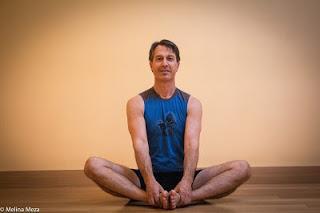
What do you call this pose?
If you have been reading my series on learning the Sanskrit names of yoga poses Part 1 and Part 2, you may have noticed many cases where the literal translation of the pose name is not the one you’re used to hearing (either in class or on this blog).For example, even though the translation of Baddha Konasana is Bound Angle pose, most often we hear this called Cobbler’s pose (cobblers in India often sit in this position.) Why? I think at some point, certain English speaking yoga teachers decided it was too hard to remember a name like that, which is kind of abstract, so it became a custom to use a more descriptive name.In fact, the older yoga poses (pre-twentieth century) were frequently named after animals and other living things that the pose resembled in some way. That makes the names much easier to remember in Sanskrit if you know Sanskrit and in English if you speak English.
- Vrksasana = Tree pose
- Bhujangasana = Cobra pose
- Salabasana = Locust pose
- Matsyasana = Fish pose
- Padmasana = Lotus pose
- Extended Side Angle pose = Utthita Parsvokonasana
- Intense Side Stretch pose = Parsvottanasana
- Intense Stretch pose = Uttanasana
- Intense Stretch of the West pose = Paschimottanasana\
- Intense Stretch of the East pose = Purvottanasana
- Three Limbs Facing One Foot Intense Stretch of the West pose= Triang Mukhaikapada Paschimottanasana
- Sanskrit is the universal language of yoga! You can go anywhere in the world and understand it or be understood. I once helped a French yoga teacher attend an English-speaking teacher’s class who was using English for pose names by quietly whispering to her the Sanskrit names of the poses. She knew them all and so was able to follow!
- English names are inconsistent. For example, I’ve heard Uttanasana be called “Standing Forward Bend,” “Intense Forward Fold,” and “Ragdoll pose.” And, wow, I just saw Triang Mukhaikapada Paschimottanasana being called “Three Faced pose”—not sure where the three faces are in that pose—as well as “Three-Limbed Forward Bend.” The Sanskrit names typically aren’t inconsistent (though in a few cases, there is more than one Sanskrit name for the same pose). And the Sanskrit names do describe the pose pretty accurately once you learn to understand what they mean.
- One day you may need your Sanskrit. Some English speaking yoga teachers use a mishmash of English and Sanskrit, like they say “Triangle pose” but then “Paschimottanasana.” And other teachers teach entirely in Sanskrit. I’m guessing you don’t want to keep sneaking looks at the others in the class to figure out which pose the teacher is talking about.
- It’s good for your brain! Learning a new language is one of the best brain aerobics you can do for brain health.

